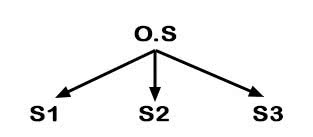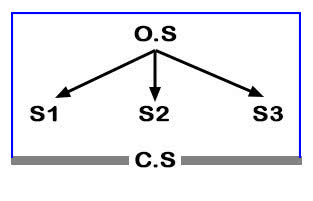Are you having trouble with your writing skills? Read this and you will find good and simple advice to make things much easier and your compositions much better. Even impressive. Just follow the 8 steps we will show you.

Most people feel somehow at a loss when they have to write a composition or an essay. They think for a moment, and then they start writing and writing and writing till they consider it is time to finish, and so they finish. That is probably the worst approach to composition writing. You must be talented and very experienced if you expect to write good compositions that way.
The first thing to consider is that a composition is not simply a piece of writing. It must be composed, it must have a structure and a cohesive organisation. Compare these two examples:
A- My brother’s tall and handsome and with blue eyes and, yeah, well, maybe a bit fat, but not much, you know, something like your cousin, but maybe not that much. And he’s very funny, ha ha, I’ll tell you about what he did yesterday, but not now. And brown-haired. Almost dark. Well, not dark but… well, yeah, dark. Oh, I said funny, but well, when he’s got a bad day, uff, he scares me sometimes…
B- My brother is tall, handsome and has got blue eyes. He is a little fat, but not much. His hair is dark brown. I like him because he is very funny and always makes me laugh. Nevertheless, he can also be quite serious sometimes.
As you can easily perceive, A is a good example of oral English, but it would be totally unacceptable for a composition. On the other hand, B is the right thing to say when writing, with simple, organised ideas. But B would be considered too pedantic and even unacceptable when talking in a normal conversation.
Using a correct language is part of it, but not enough. Both A and B are correct language, but Spoken and Written language are different, they use, to some extent, different vocabulary, different grammar and, especially, a different way to express things!
 So if correction is not the only thing we need for a composition, what is it we also need? Organisation. We need to compose our text like a nice piece of music, flowing. We need to organise our ideas into paragraphs and make sure every paragraph, as well as the whole composition, is cohesive. Our thoughts must unfold beautifully, clearly and in a simple way in a sort of straight line that will lead us from one idea to the next to end up in a conclusion. And that is not something you can usually come out with by just sitting and writing. You need to have a plan first.
So if correction is not the only thing we need for a composition, what is it we also need? Organisation. We need to compose our text like a nice piece of music, flowing. We need to organise our ideas into paragraphs and make sure every paragraph, as well as the whole composition, is cohesive. Our thoughts must unfold beautifully, clearly and in a simple way in a sort of straight line that will lead us from one idea to the next to end up in a conclusion. And that is not something you can usually come out with by just sitting and writing. You need to have a plan first.
Many think that planning is a waste of time, especially if you are sitting for an exam and time is limited. But the truth is that planning your composition will not only make the task easy and much better; it will also make it all faster. At least once you have practised a little bit.
The key is to manage your time effectively, so you can dedicate enough focus to writing your composition. If you find yourself overwhelmed with tasks, delegating some of the work, like using a service that can write my paper for me in 3 hours, can save you time and ensure that you stay on track, leaving you with more time to perfect your writing.
First, you have to know what topic you’re going to write about. In most situations you will already know this when you sit down to write. And then, you must start making an outline:
OUTLINE
1- opening sentence = topic + approach
2- ideas connected to the opening sentence
3- details about those ideas
4- closing sentence
When you are happy with the outline, it comes the time to do the writing, and here you should follow these other 4 steps:
5- write a title
6- organize ideas into paragraphs
7- write the composition
8- correct your composition
In this article we well help you to make a good outline, which is the basis of this method. We will complete the 8 steps in a second article (see part 2, to be published very soon). So let’s get started.
1- topic + approach = opening sentence (O.S.)
 The opening sentence will be the first sentence in your composition. It’s very important because everything you will say in your composition must be connected with the idea expressed in this sentence and nothing can modify it, contradict it or say something which is not contained in this opening sentence.
The opening sentence will be the first sentence in your composition. It’s very important because everything you will say in your composition must be connected with the idea expressed in this sentence and nothing can modify it, contradict it or say something which is not contained in this opening sentence.
Think of the opening sentence as a little perfume bottle: the topic is the material (the glass), the approach is the shape of the glass, and all the composition will be the perfume inside the bottle. If some perfume falls outside the bottle, it will evaporate (and spoil your composition).
Think of a word or several words that will identify the topic. Think of a word or several words that will identify the approach. The topic is what your composition is about. Your approach is usually what your opinion about the topic is, or just the way you see it, or what you want to say about that topic. When you have the topic and the approach, write the opening sentence with both ideas.
Example:
Topic- Life in a village
Approach- better than cities
Opening sentence- Nowadays, most people prefer living in cities, but I prefer to live in a village because life there is much better and healthy.
Another example of O.S.- Life in a village is very different from life in the city. (topic: life in a village / approach: different from city)
2- ideas (points) connected to the opening sentence
 Think of several ideas deriving or connecting to the opening sentence (both the topic and the approach). Remember that these ideas must explain, expand, support or prove the opening sentence, and none of these ideas may modify or contradict it. All these ideas must express what you said in the opening sentence, so don’t talk about things which are not directly connected with it. For example, don’t talk about a point (an idea) which is connected to another point in the composition, but not directly connected to the opening sentence (disgression).
Think of several ideas deriving or connecting to the opening sentence (both the topic and the approach). Remember that these ideas must explain, expand, support or prove the opening sentence, and none of these ideas may modify or contradict it. All these ideas must express what you said in the opening sentence, so don’t talk about things which are not directly connected with it. For example, don’t talk about a point (an idea) which is connected to another point in the composition, but not directly connected to the opening sentence (disgression).
Example of good points:
- no pollution
- people know each other
- friendly people
- contact with nature
- life is cheaper
Example of bad points:
- I live in Rome (not relevant to the O.S.)
- Villages in the south of Spain are bigger than in the north (wrong, we must compare life in the village with life in the city, not comparing different villages)
- Last year I visited a very beautiful village (not relevant to the O.S.)
- Night life is boring (it contradicts the O.S. unless you compensate this with a “but…”)
- People gossip and are nosy and messes with your life (modifies or contradicts the idea in the O.S.)
- In the 14th century many villages were created (who cares? We’re not talking about history)
- My friend Tom lives in a village (not relevant, unless you use Tom’s opinion to support yours)
- My friend Tom, from a village, is very friendly (digression: this idea is not directly connected with the O.S.. It is directly connected to the point “friendly people” and only indirectly connected to the O.S., so it’s no good)
3- details about the points
Each point is the seed of a future paragraph (or section or chapter, if it is a long writing). For every point, think of a few details to explain that idea.
Example: - friendly people
- people help you
- people talk to you in the streets
- people invite you to a drink in the bars
4- closing sentence
 The closing sentence is also very important because it must leave your composition closed, finished, so that you can’t say anything else after it. If the opening sentence is the bottle of perfume and the ideas (and details) are the perfume, then the closing sentence is the cap: If there is no cap, the perfume will evaporate and be wasted. An open composition is a piece of unfinished work, and not complete. There are many ways of closing a composition, but the most usual ones are:
The closing sentence is also very important because it must leave your composition closed, finished, so that you can’t say anything else after it. If the opening sentence is the bottle of perfume and the ideas (and details) are the perfume, then the closing sentence is the cap: If there is no cap, the perfume will evaporate and be wasted. An open composition is a piece of unfinished work, and not complete. There are many ways of closing a composition, but the most usual ones are:
1- a restatement of the opening sentence (you say the same idea but using different words) Example: There’s no doubt about it: life in a village is much better than life in a city.
2- a summary of the points (ideas). Example: With a cheaper life, a close contact with nature, a healthy environment and surrounded by nice people, villages are the ideal place to live.
3- a look to the future. Example: I really think I should leave the city and look for a nice house in a village as soon as possible.
4- a related thought that grows out of the body (usually a conclusion from the points). Example: That’s why our urban societies are more efficient, but its people are less human.
5- mixed type (a combination of several types of conclusions) Example: That’s why I’m planning to move to a village, because life there is much better than in the cities (type 3 + type 1, even the whole sentence can be an example of type 4)
So if you follow this advice, you will find that writing turns easier and the results are much better than when you simply sit and write. Just remember the bottle of perfume:
- The glass: The opening sentence. Your first sentence, which will contain all the ideas of your piece of writing inside.
- The perfume: All the things you have to say. Don’t let even a drop fall outside the bottle.
- The cap: The last sentence in your composition. The one that will close it and make it a finished piece of work.
Once you have a good outline, you must use it to write your composition, essay or whatever you must write. Things are now much easier when you know all the time exactly what you have to say, confident that you’ll never get tangled, blocked or messed up in your writing. We can also guide you in this second phase (steps 5-8), but that will be in our next article:
8 Steps to Write a Good Composition (part 2)
Written by Angel Castaņo













